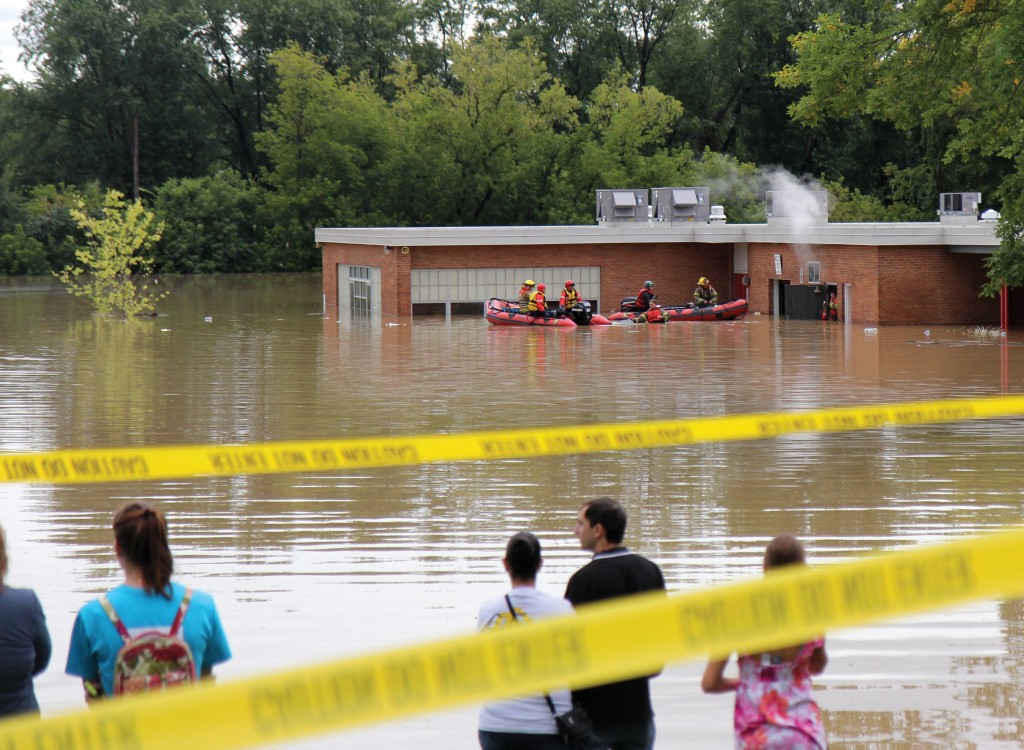
One year after floods caused by Tropical Storm Lee ravaged the Southern Tier, the Binghamton area is still recovering from the aftermath.
The flood caused $513 million in damage to Broome County and there are approximately 25 damage sites in Binghamton that remain unfinished, according to Andrew Block, executive assistant to the mayor.
“We expect that final repairs will extend into the 2013 construction season,” Block wrote in an email to Pipe Dream. “These damage sites include city roads, parks and sewer and storm water utilities.”
Block said reconstruction efforts in many of the most heavily affected areas have been completed.
“A large percentage (60%) of all damage sites including debris removal have been completed,” he wrote.
Some of these projects include preventative measures against future disasters, according to Block.
“Several damage sites include mitigation measures that should reduce our vulnerability for future flooding events,” he said.
Binghamton has received approximately $1.7 million in aid thus far, and expects $3 to $3.5 million in total, depending on the work required for remaining projects, he added.
“The city has helped the owners of 23 properties apply for federal assistance through FEMA’s Hazard Mitigation Grant Program,” he said. “Three properties applied for the Elevation Program, 12 properties applied for the Substantial Damage Buyout Program and eight properties applied for the No Substantial Damage Program.”
According to Block, the hardest hit road in Binghamton is Hiner Road. Hiner remains open but plans for its renovation are underway.
Severely damaged residential areas such as Duke and Baltimore, and Conklin Avenue west of Mill Street have been under renovation, but remain susceptible to another flood, he said.
Reconstruction efforts along the east side of Chenango River, including Riverwalk Hotel, 2 Court St. and Holiday Inn, are completed.
Sara Benedict, a senior majoring in history, is among the Binghamton University students displaced by the flood last year. Married with two children, she and her family were evacuated from their home in Vestal during the flood, she said.
“We left our home with every intention of being able shortly return,” Benedict wrote in an email. “We ended up losing everything and we never able to return to our home.”
Benedict said the flood affected her as a student in small ways.
“I lost my books (but the campus book store helped to replace them), I missed quite a few classes (most of my professors [were] accommodating), and my grades suffered a bit because I lost work space and time to complete my work,” Benedict said.
She and her family are currently renting a house from friends, and things are finally starting to return to normal, she said.
“We sold our flooded property and are looking for a new home,” Benedict wrote.
She added that she received help from family and friends as well as from local churches and organizations like the American Red Cross.
“Getting supplies during the flood was a major issue and things (gloves, boots, shots etc…) were hard to come by. Those organizations made those items easier to find and receive,” Benedict wrote.
Over 1,000 students and almost 100 faculty and staff provided support to displaced families at the emergency shelter set up in the Events Center during and after the flood, said Dr. Allison Alden, director of the Center for Civic Engagement (CCE).
“I just want to say how proud I am of the University’s response during our community’s critical time of need,” Alden said. “Our students really rose to the occasion and showed a great deal of compassion and generosity.”


